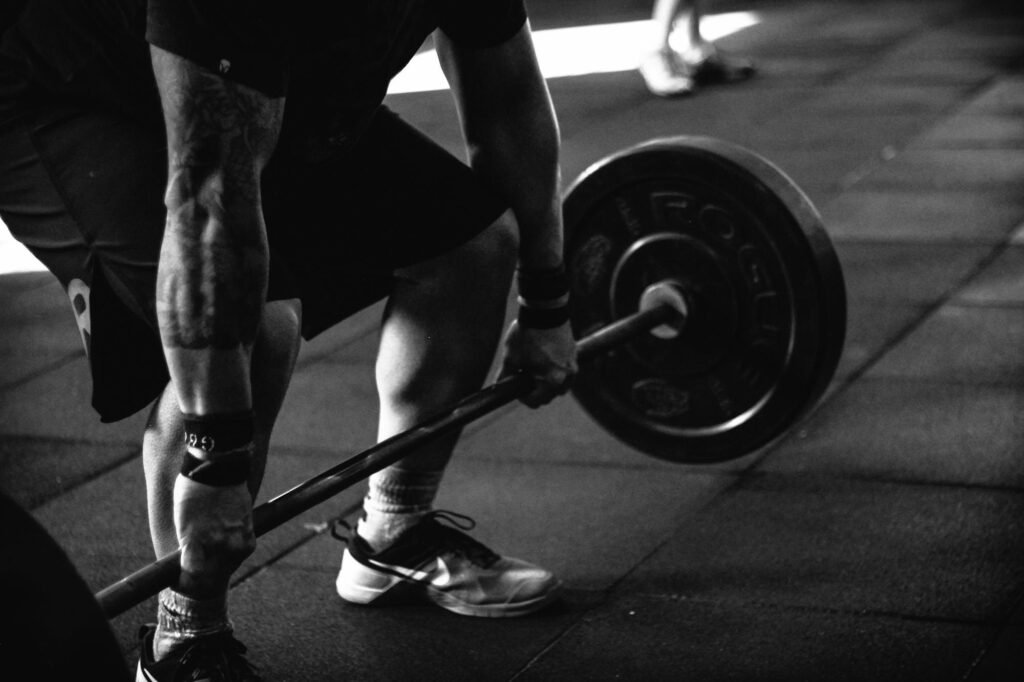
Congratulations on reaching the fabulous age of 50! As you enter this new phase of life, it’s important to prioritize your overall health and well-being. In this article, we have gathered a collection of valuable tips and tricks to help you stay fit and active while embracing all the joys and adventures that come with this milestone. From incorporating regular exercise into your routine to making mindful choices about nutrition and self-care, we’ve got you covered. So, let’s dive in and discover the secrets to staying fit and thriving over 50!
Find more product like these on Amazon!
Finding the Right Exercise Routine
When it comes to staying fit over 50, finding the right exercise routine is key. Consulting with a healthcare professional is an important first step. They can assess your current health condition and provide guidance on the best exercise approach for you. They can also address any specific concerns or limitations you may have, ensuring that your exercise routine is safe and effective.
Choosing activities you enjoy is crucial for sticking to an exercise routine. Find activities that bring you joy and make you excited to move your body. Whether it’s walking, dancing, swimming, or biking, the options are endless. When you enjoy the activities you’re participating in, exercise becomes something you look forward to, rather than a chore.
A well-rounded exercise routine should include a mix of aerobic, strength, and flexibility exercises. Aerobic exercises, such as brisk walking or cycling, help improve cardiovascular health and stamina. Strength training exercises, such as weightlifting or resistance band exercises, are important for maintaining muscle mass and bone density. Flexibility exercises, like stretching or practicing yoga, help improve range of motion and prevent injuries.
It’s important to start slow and gradually increase the intensity of your workouts. This allows your body to adapt and helps prevent risk of injury. Listen to your body and pay attention to any signs of discomfort or fatigue. Gradually increase the duration and intensity of your workouts as your fitness level improves.
Finding a workout buddy or joining a fitness group can be incredibly motivating and fun. Exercising with others not only provides accountability, but also adds a social aspect to your fitness routine. Having a support system can make staying fit over 50 a more enjoyable experience.
Importance of Cardiovascular Exercise
Cardiovascular exercise plays a crucial role in maintaining a healthy lifestyle for older adults. It offers a wide range of benefits, including improved heart health, increased endurance, and reduced risks of various chronic diseases. Engaging in regular cardiovascular exercise can also improve mood and mental well-being.
For older adults, low-impact cardio exercises are often recommended to minimize stress on the joints. Walking is a great option that can be done anywhere and at any time. Swimming and water aerobics are also excellent choices as they provide resistance and support for the body, reducing the risk of injuries. Cycling, either outdoors or on a stationary bike, is another low-impact option that can be enjoyed by individuals of all fitness levels.
The frequency and duration of your cardio workouts will depend on your fitness level and goals. Aim for at least 150 minutes of moderate-intensity cardio exercise per week, or 75 minutes of vigorous-intensity exercise. This can be spread out over several days, such as 30 minutes of exercise on five days of the week. Remember, it’s important to listen to your body and gradually build up your cardio workouts to avoid overexertion.

This image is property of images.pexels.com.
Strength Training for Older Adults
Strength training is especially important for older adults as it helps maintain muscle mass and bone density. As we age, we naturally lose muscle mass, which can lead to decreased strength and increased risk of falls. Incorporating regular strength training exercises into your routine can help mitigate these risks and improve overall physical function.
Weightlifting, resistance bands, and bodyweight exercises are all effective methods of strength training for older adults. Start with lighter weights or resistance bands and gradually increase the load as your strength improves. Focus on different muscle groups to ensure a balanced workout and vary the exercises to keep it interesting.
Proper form and technique are crucial when performing strength training exercises. This helps prevent injuries and ensures that you are targeting the correct muscles. If you’re unsure about proper form, consider working with a qualified personal trainer who can provide guidance and support.
As with any exercise routine, it’s important to gradually increase the resistance and challenge yourself. This can be done by increasing the weight, the number of repetitions, or the difficulty of the exercises. Remember to listen to your body and avoid pushing yourself too hard, as this can increase the risk of injuries.
Flexibility and Balance Exercises
Maintaining flexibility and balance is essential for preventing falls and injuries as we age. Incorporating stretching exercises into your routine can improve your flexibility, allowing for better range of motion and reducing muscle stiffness. Stretch major muscle groups, such as the calves, hamstrings, quadriceps, shoulders, and back.
Practicing yoga or tai chi is also beneficial for improving balance and flexibility. These activities focus on slow, controlled movements that challenge your balance and increase body awareness. They can help improve stability and reduce the risk of falls.
Utilize stability exercises and balance boards to further enhance your balance and coordination. These exercises challenge your body’s ability to maintain control and stability, which can translate to improved balance in everyday activities.
It’s important to modify exercises to accommodate any physical limitations or injuries you may have. If certain movements or poses are challenging, there are often modifications available that can make them more accessible. Don’t hesitate to consult with a qualified fitness professional to help you find modifications that work for you.

This image is property of images.pexels.com.
Healthy Diet and Nutrition
Alongside exercise, maintaining a healthy diet is essential for overall health and well-being. A well-balanced diet provides the necessary nutrients to support your fitness goals and maintain a healthy weight. It’s important to include plenty of fruits, vegetables, whole grains, and lean proteins in your diet.
Foods rich in calcium and vitamin D are particularly important for older adults to support bone health. Include dairy products, fortified plant-based milk alternatives, leafy green vegetables, and fish with edible bones in your diet. If needed, talk to your healthcare provider about calcium and vitamin D supplements.
Staying hydrated is also crucial for maintaining good health. Drink plenty of water throughout the day, and limit sugary and processed foods that can dehydrate your body. Consider consulting a registered dietitian to receive personalized guidance and ensure that your diet supports your specific needs and goals.
Prioritizing Rest and Recovery
Rest and recovery are just as important as exercise in maintaining a healthy lifestyle. Recognize the importance of rest days and allow your body time to recover from workouts. This helps prevent overtraining and reduces the risk of injuries.
Adequate sleep is crucial for overall health and well-being. Aim for seven to eight hours of quality sleep each night. Establish a relaxing bedtime routine, create a comfortable sleep environment, and prioritize restful sleep as part of your overall fitness routine.
Listen to your body and avoid overexertion. If you’re feeling fatigued, take a break or engage in lighter activities that promote relaxation. Incorporate stress-management techniques such as meditation, deep breathing exercises, or practicing mindfulness to help reduce stress levels and promote mental clarity.
Consider alternative therapies, such as massage or acupuncture, to further enhance your rest and recovery routine. These therapies can help alleviate muscle tension, reduce soreness, and promote relaxation.

This image is property of images.pexels.com.
Maintaining an Active Lifestyle
Staying fit over 50 involves more than just structured exercise routines. Incorporating physical activity into your daily routines can contribute to an overall active lifestyle. Look for opportunities to move your body throughout the day.
Take regular walks or bike rides instead of driving short distances. Opt for stairs instead of elevators whenever possible. Little habits like these can add up and contribute to increased physical activity.
Engaging in recreational activities is a great way to stay active and have fun. Join a dance class, go for a swim, or pick up a new recreational sport. Not only do these activities provide exercise, but they also offer a chance to socialize and meet new people.
Traveling and exploring new places can be an exciting way to stay active. Whether it’s hiking in nature, exploring urban areas on foot, or participating in outdoor activities specific to the location, traveling can provide unique opportunities for physical activity.
Regular Health Screenings and Check-ups
Regular medical check-ups are important for staying healthy and catching any potential health issues early on. Your healthcare provider can perform screenings for common chronic conditions like diabetes, heart disease, and osteoporosis. These screenings help identify any potential concerns and allow for early intervention and treatment.
Monitor your blood pressure, cholesterol levels, and bone density regularly. Talk to your healthcare provider about appropriate intervals for these tests based on your individual health needs. Be proactive in discussing any concerns or symptoms you may have, as early detection is key in managing and treating many health conditions.
Stay up to date with vaccinations as recommended by your healthcare provider. Vaccines can help prevent various diseases and protect your overall health.
Listening to Your Body
Listening to your body is crucial for staying fit over 50. Pay attention to how your body feels during and after exercise. If you experience any pain or discomfort that lasts beyond normal muscle soreness, it’s important to address it.
Recognize signs of overexertion or injury, such as severe pain, swelling, or limited mobility. When you notice these signs, it’s important to take a step back and allow your body time to heal. Rest, and if necessary, seek medical attention to properly address the issue.
Modify exercises to accommodate any physical limitations or injuries you may have. There are often alternative movements or modifications available that can help you continue exercising safely and effectively. Don’t be afraid to consult with a qualified fitness professional or physical therapist for guidance and support.
Remember, it’s important not to push yourself too hard. Know when to take breaks and adjust your exercise routine as needed. Your body knows its limits, so listen to it and honor what it needs.
Maintaining a Positive Mindset
Maintaining a positive mindset is key to staying fit over 50. Focus on the benefits that regular exercise and a healthy lifestyle bring to your life. Celebrate your progress, no matter how small, and set realistic goals that align with your capabilities and aspirations.
Finding activities you enjoy is essential for staying motivated. When you genuinely enjoy the activities you engage in, exercise becomes something you want to do, rather than something you feel like you have to do. Experiment with different types of exercise and find what brings you joy.
Support from friends, family, or fitness communities can be invaluable in staying motivated and maintaining a positive mindset. Surround yourself with people who encourage and uplift you on your fitness journey. They can provide accountability, motivation, and a source of inspiration.
Lastly, embrace aging and appreciate the wisdom that comes with it. Acknowledge the unique experiences and knowledge you’ve gained over the years. Aging is a privilege denied to many and should be celebrated. Embrace the age you are and strive for a healthy, active lifestyle that honors your body and mind.

